An Archival Impulse
Twenty Years Later
DOI:
https://doi.org/10.5281/zenodo.15756946Keywords:
Archival impulse, Contemporary Art, Dataism, Digital tools, VirtualizationAbstract
This year [2024] marks the 20th anniversary of An Archival Impulse. In it, Hal Foster introduces the artist-as-archivist, noting that it has gained a renowned impetus as a critical response to the current saturation of stimuli and the search for new ways of thinking on past, present, and future.
At one point, he suggests that the ideal medium for archive-based art might be the web - yet emphasising that most artists still prioritise materiality and human interpretation over complete virtualisation and automation. We mustn’t forget that Foster referred to coeval artists and that, nowadays, his observations no longer fully capture the current landscape. Increasingly, artists are making fruitful use of digital tools, using the internet, or taking advantage of machine learning algorithms to process vast datasets. This raises questions about whether the fundamental principles of archival art have changed, the challenges its facing, and the insights these emerging practices can provide. This paper will reflect on this discrete category expansion.
Downloads
References
Barabási, Albert-László. 2022. “Why the World Needs ‘Dataism’, the New Art Movement That Helps Us Understand How Our World Is Shaped by Dig Data.” Artnet, September 23. news.artnet.com/art-world-archives/introducing-dataism-2181005.
Bourriaud, Nicolas. 2002. Postproduction. Culture as Screenplay: How Art Reprograms the World. Has & Sternberg.
Brooks, David. 2013. “The Philosophy of Data”. New York Times, February 4. nytimes.com/2013/02/05/opinion/brooks-the-philosophy-of-data.html
Callahan, Sara. 2022. Art + Archives: Understanding the Archival Turn in Contemporary Art. Manchester University.
Carbone, Kathy. 2020. “Archival Art: Memory Practices, Interventions, and Productions.” Curator: The Museum Journal 63 (2): 257-263. doi.org/10.1111/cura.12358
Dias, Rita. 2022. “Arte e Arquivo: A Emergência do Arquivo nas Obras de Arte Contemporânea (1960-2017).” PhD Diss., University of Lisbon. hdl.handle.net/10451/51102.
Foster, Hal. 2004. “An Archival Impulse.” October 110: 3 - 22. Massachusetts Institute of Technology. doi.org/10.1162/0162287042379847
Harari, Yuval Noah. 2017. Homo Deus. História Breve do Amanhã. Translated by Bruno Vieira Amaral. Penguin Random House / ELSINORE.
Haylett, Sarah. 2023a. Living Archives at Tate: After An Archival Impulse. tate.org.uk/research/reshaping-the-collectible/archives-living-archives-at-tate-after-an-archival-impulse
__________ 2023b. Principles and Practices for Artworks that Generate Archival Material: A Working Proposal. tate.org.uk/research/reshaping-the-collectible/archives-principles-practices-archival-material-working-proposal
Manovich, Lev. 2000. “Interview with Lev Manovich” by Inna Razumova. SWITCH 13, 20 January. switch.sjsu.edu/archive/nextswitch/switch_engine/front/front.php%3Fartc=250.html
__________ 2001. The Language of New Media. Massachusetts Institute of Technology.
Moeglin-Delcroix, Anne. 1997. Esthétique du Livre d’Artiste: 1960-1980. Jean-Michel Place / Bibliothèque Nationale de France.
Sekula, Allan. 1986. “The Body and the Archive.” October 39: 3 - 64. Massachusetts Institute of Technology. doi.org/10.2307/778312
Downloads
Published
How to Cite
Issue
Section
License
Copyright (c) 2025 Rita Cêpa

This work is licensed under a Creative Commons Attribution 4.0 International License.








